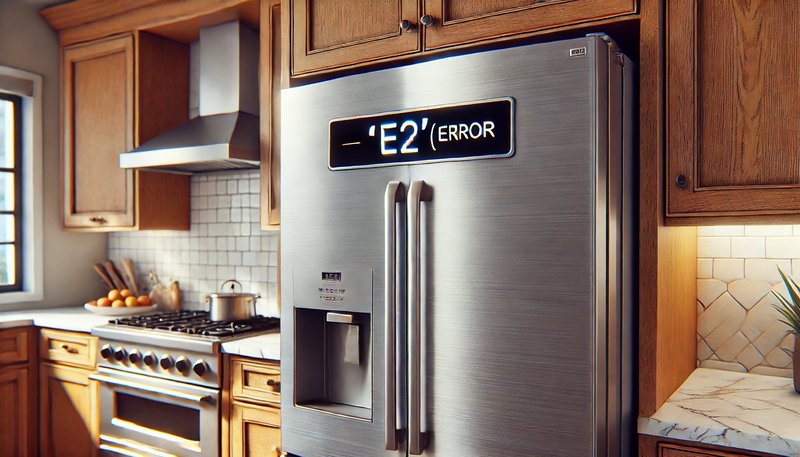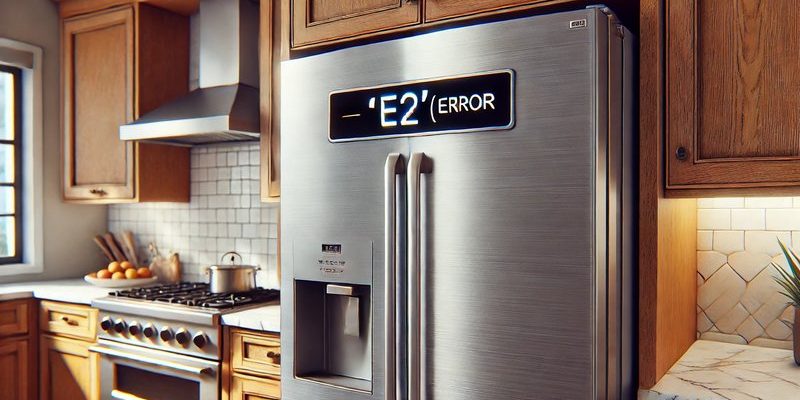
You see, refrigerators are like the unsung heroes of our kitchens. They quietly hum along, preserving our food and keeping our drinks cold. But when a problem arises, like the “OE” error, it’s a signal that something’s not quite right in the defrost department. Ignoring it might be tempting, especially if everything appears to be working fine at first glance, but this could lead to a cascade of issues that might just turn your trusty fridge into a frosty problem. So let’s dive into what this error means for your refrigerator, what might happen if you ignore it, and most importantly, how you can fix it.
Understanding the “OE” Error Code
The “OE” error on a GE refrigerator might sound like a cryptic message from a sci-fi movie, but it boils down to a defrost system issue. The defrost system is like the cleaning crew for the internal workings of your fridge, preventing frost buildup that can cause inefficiencies. When this system malfunctions or gets blocked, your fridge struggles to maintain the perfect temperature, just like how a car struggles when its windshield frosts over and you can’t see anything.
Think of it this way: when ice builds up on the evaporator coils, it can block the airflow, making the rest of the refrigerator warmer because cold air can’t circulate freely. This is where the “OE” error comes in to warn you that something’s amiss. The error is often linked to problems with the heating element, defrost timer, or defrost thermostat. These components work together like the gears of a clock, ensuring that frost doesn’t overstay its welcome.
So, what triggers this error? Imagine your refrigerator as a marathon runner. If the defrost heater is broken, it’s like the runner having to slow down because their shoes are untied. The refrigerator operates less efficiently, and gradually, you might notice that your veggies aren’t as crisp, and your ice cream turns into a milkshake. Addressing the error code promptly can prevent these inconveniences.
Potential Consequences of Ignoring the Error
By choosing to ignore the “OE” error, you might miss the opportunity to fix a minor issue before it turns into a costly repair. It’s like noticing a small crack in your car windshield but doing nothing about it. Eventually, that crack might spread, requiring a much more expensive and time-consuming fix.
When the “OE” error is left unchecked, one potential result is a significant drop in your refrigerator’s efficiency. This could mean higher electricity bills as your fridge works overtime to maintain the necessary temperature. It’s akin to leaving the AC on full blast with a window open; it wastes energy and money. Over time, constant strain on the refrigerator components can lead to system breakdowns, requiring extensive—and expensive—repairs.
Moreover, food safety could also become an issue. If your fridge isn’t cooling properly, perishable items might not be stored at safe temperatures, increasing the risk of foodborne illnesses. Nobody wants to play roulette with last night’s leftovers or that carton of milk. Thus, taking action as soon as you spot the “OE” error can safeguard both your appliance and your health.
Steps to Fix the “OE” Error
Tackling the “OE” error might sound intimidating, but it’s often easier than you’d think. First off, unplug your refrigerator for safety—think of this step as putting on your seatbelt before a drive. Then, inspect the back of the fridge where you’ll find the defrost system. Look for any visible signs of frost buildup or damaged components.
If you’re handy, you can use a multimeter to test the defrost heater and thermostat for continuity. It’s similar to checking if a light bulb is burned out by seeing if it completes the circuit. A lack of continuity might mean it’s time for a replacement. Alternatively, setting the defrost timer manually using its dial could help to kickstart the defrost cycle. This is like manually winding a clock to get it back on time.
For those not confident in doing these checks, calling in a professional could be the best route. Experts can quickly diagnose and fix the issue, often saving you time and hassle in the long run. And remember, regular maintenance, such as cleaning the coils and ensuring proper airflow, can help prevent these issues from arising in the first place.
Prevention Tips and Maintenance
To avoid the pesky “OE” error in the future, a little preventative care goes a long way. Start by making sure the back of your refrigerator isn’t crammed with stuff. Good airflow is key, so think of your fridge’s interior like a concert hall—everyone should have space to breathe. Check and clean the condenser coils every six months to prevent dust buildup, as these coils play a crucial role in the cooling process.
Another tip is to ensure the door seals are tight and in good condition. Imagine a door that doesn’t quite close, letting cold air escape—it’s the same with your fridge door seals. Leaks around the door can cause the compressor to work harder, leading to potential failures and errors like “OE”.
Finally, regular defrost cycles are critical. Avoid frequently opening the doors unnecessarily, just like you wouldn’t open the oven door too much when baking. Keeping the cold air in helps the system remain efficient. By taking these simple maintenance steps, you can extend the life of your refrigerator and avoid those inconvenient error codes down the road.
In conclusion, while the “OE” error in your GE refrigerator may initially seem daunting, addressing it promptly can save you from bigger headaches later on. With a little knowledge and preventative care, you can keep your fridge running smoothly and ensure your food stays fresh. So next time you see that error code, you’ll know exactly what to do!
